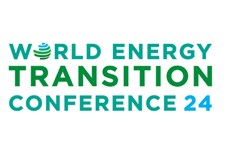Mapping out the road to RBI optimisation
Published by Callum O'Reilly,
Senior Editor
Hydrocarbon Engineering,
Pressure vessels and piping assets in the chemical, petrochemical, and refining industries require the highest attention to ensure they remain fully operational and intact. So, what happens when abnormalities such as cracking, corrosion, and other critical issues present themselves?
Risk-based inspection (RBI) is a highly effective option for identifying damage mechanisms and provides recommendations for appropriate non-destructive evaluation (NDE) methodologies through a suite of advanced software. While this tool is critical to alerting plant personnel of potential issues, most RBI recommended practices and software only suggest a handful of NDE techniques to detect the damages, and typically do not include advanced techniques, which are often proven to be more effective.
Plants can benefit by working with a third-party service provider with experience in damage mechanism analysis and the selection of advanced NDE methodologies to help bridge the gap between RBI results and suggested highly effective NDE methodologies.
By taking the time to enhance an inspection program, owner/operators are able to maximise their time, budget, and plans accordingly. This type of program offers a selection of benefits strategically designed to keep operations running at a highly effective and profitable level.
Determining damage mechanisms
RBI is an effective way to determine expected damage mechanisms and select NDE methods suitable for the detection and quantification of damage. These abnormalities can have a significant impact on the integrity of virtually any pressure vessel or piping asset, caused by a variety of asset characteristics and operating parameters, including:
- Material of construction.
- Operating temperature.
- Corrosivity of the process.
- pH.
- Flow rate.
- Environmental elements.
The impact can vary from minimal to significant, and include cracking, localised corrosion, or general corrosion, or any of their many sub-categories.
Having a thorough understanding of all potential damage mechanisms helps to identify what type of inspection method(s) is ultimately required. Damage mechanism/corrosion analysis must be performed by qualified personnel, and the selection and execution of a suitable NDE methodology must be determined by highly qualified subject matter experts (SMEs). In this regard, it is essential to work with a third-party service provider with expertise in engineering analysis and NDE methodology, such as MISTRAS Group, to guide the planning and decision-making process...
Written by Jim McVay and Russ Davis, MISTRAS Group, USA.
This article was originally published in the June 2020 issue of Hydrocarbon Engineering. To read the full article, and other great technical articles in this issue, view the full issue here. You can also register to receive a free regular copy of the magazine here.
MISTRAS Group will also be one of the presenters at Refinery of the Future 2020, taking place tomorrow (25 June). Refinery of the Future is a free online conference which will explore the latest trends and technology driving the future of the refining sector. Register to attend this free online conference here.
Read the article online at: https://www.hydrocarbonengineering.com/special-reports/24062020/mapping-out-the-road-to-rbi-optimisation/
You might also like
Viridi Energy signs 20-year agreement with Énergir
Viridi Energy, a renewable natural gas (RNG) platform, has signed a 20-year offtake agreement with Énergir, L.P.


